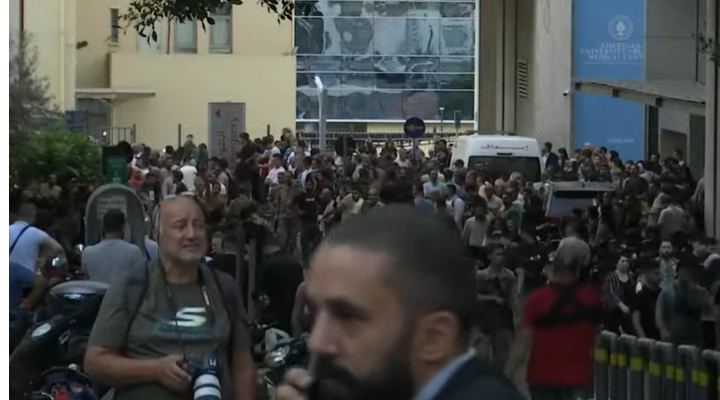The explosive was so well hidden that even if suspicious terrorists would take the devices apart – which Israeli officials believe at least some of them did, even perhaps X-raying them – it wouldn’t be found.
By Batya Jerenberg, World Israel News
The September 17 and 18 pagers explosions that maimed some 3,000 Hezbollah operatives in Lebanon and killed a few dozen was almost two years in the making, The Washington Post reported Sunday in an exclusive report.
Citing unnamed American, Israeli and Lebanese security and other sources, the paper reported that in February 2023, a marketing agent who used to work for the Gold Apollo pagers company in the Middle East and then formed her own company to sell them and other beepers, convinced Hezbollah officials to make a bulk purchase of 5,000 devices.
“She was the one in touch with Hezbollah, and explained to them why the bigger pager with the larger battery was better than the original model,” said an Israeli official.
Two major selling points of the AR924 model were their hard cases and their extra-long battery life, making them particularly suitable for months-long use in rugged conditions.
Neither the Apollo company nor the unnamed marketing agent knew anything about the secret Israeli plan to assemble the devices themselves, inserting a battery pack with a tiny but powerful bomb inside and then slipping them into the shipment.
The explosive was so well hidden that even if suspicious terrorists would take the devices apart – which Israeli officials believe at least some of them did, even perhaps X-raying them – it wouldn’t be found.
The report quoted an Israeli official who explained that the pagers were rigged to explode when someone received a special, encrypted message that required him to press two buttons simultaneously, necessitating the use of two hands.
The blast would then injure both, rendering the terrorist “incapable” of fighting, the official said.
Reports out of Lebanon at the time also said an unknown number of terrorists were blinded or killed as they held the pagers up to their faces to read the message they were supposedly about to receive.
The pagers could also be set off remotely, which the Mossad did “less than a minute” after the encrypted message enticed the first massive group to hold the devices, the report said. Some 2,000 others then exploded.
Video clips uploaded to social media showed men being rushed to hospitals with injuries in the hip and stomach areas, consistent with the location such devices are usually carried about.
The report noted that the hundreds of Hezbollah walkie talkies that exploded the next day, injuring many more terrorists, were actually booby-trapped by Israel and sold to the terrorists much earlier, in 2015.
These specially-made two-way radios had a dual purpose.
The first, which was how it was used for nine years, was its ability to let Israeli intelligence listen in on everything being said on the old-fashioned communication devices, giving the Mossad invaluable information on the most formidable enemy Israel had on its border.
The second, like the pagers, was as an offensive weapon, as they, too, contained a small explosive hidden inside.
Once the pagers were blown up, it was almost a given that the walkie talkies had to be detonated as well, since the Israelis would expect Hezbollah to make the logical move of ordering that its operatives should get rid of all their communication devices at least temporarily, as a precautionary move.
